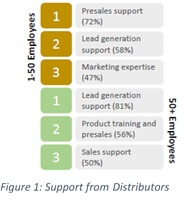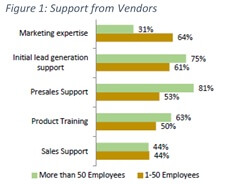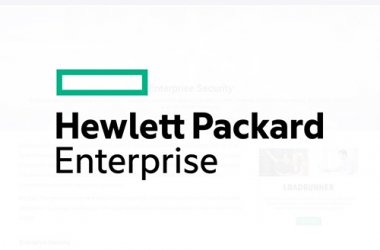If you’ve gone through the old Indian school system, like I have, you would remember that most classrooms were filled with 40+ students managed by a single class teacher. (This may still be the case in certain schools).

With a low teacher to student ratio, the teacher would be forced to focus on the studious top performing students in the class, who would typically be sitting in the front row, with an inability to pay attention to the back-benchers who, while could be highly intelligent and academically inclined, were the naughty and notorious class disruptors!
With innovations in education, most schools have now begun to reduce their class strength to a maximum of 25 students and even have appointed class assistants to further support teachers to manage their classrooms.
Does this analogy remind you of our channel eco-system management practices?
Most global organisations have hundreds of partners across the world split into their tiered channel program. With the studious and top performing students (channel partners) forming the base of the top tier level, whether you call it Gold, Platinum, etc. (essentially they are the frontbenchers) and the rest being split into the other tier levels such as Silver, Registered, etc. (though not all of them are naughty, let’s club them together as backbenchers).
Considering the above analogy, wherein like most classrooms, many vendors have limited channel management resources, the attention which would include dedicated support teams, channel marketing dollars, etc. is typically lavished on the frontbenchers with limited focus being provided to the backbenchers.
While this may not seem right, the issue stems from the 80:20 scenario, wherein 80% of the revenue is brought in by 20% of the channel base, and the vendor’s channel management team (like with any other sales team) are under constant month-end, quarter-end and year-end pressure to deliver revenues.
Apart from the revenue aspect, there are various other factors that contribute to this situation:
- The frontbenchers, i.e. the higher-tiered partners, are typically large in nature and thus have the fiscal and technical resource capability to address complex and larger value projects.
- The backbenchers, i.e. the lower-tiered partners, are at times much smaller in terms of their technical resource capabilities, as well as, financial wherewithal to address larger ticket items.
Hence, it becomes a simple question of risk mitigation, wherein most vendors look at their larger and top tiered partners to ensure that their revenues are transacted, and customers supported.
The above situation has also resulted in a couple of engagement aspects between the vendors and their channel eco-system:
- Expectation of the frontbenchers: With a larger team size, most top tiered partners, are under tremendous pressure to deliver revenue and profitability to their management. This in turn, has created a fulfillment model expectation between them and their vendors. With their ability to financially execute larger value deals, their expectation from their vendors is that most large vendor driven deals will be routed through them, with little or no, technical support from their end. One of the vendors, that I had a conversation with, mentioned that one of their top-tiered partners had even asked for a regular pipeline submission by the vendor’s channel manager to them so that they’re aware of the deals the vendor would be bringing to them!
- Appetite of the backbenchers: With little or no support, the lower-tiered partners are at times hungrier for support and revenue. With pressures to survive, these partners look at innovative solutions to bring to their customer base, in a need to differentiate themselves. While their team sizes may not be big, it also creates a unique multi-tech skilled team, allowing them to bring true systems integration capabilities to the table. Conversation with another vendor, highlighted that a recent analysis of their revenue, reflected net new opportunities being brought in by some of what they considered backbencher partners, with revenues of the frontbencher partners actually dipping in recent times!
Over the years, I’ve always maintained that more attention should be paid to these backbenchers, even if it’s from a basic risk mitigation stand point, to ensure that you have skilled back-up partners ready to grow to the front bench, if one of your existing frontbenchers suddenly drops or churns for any reason.
In my opinion, keeping the classroom analogy in mind, the vendor is the class teacher and their distributors are the new class assistants; wherein the vendor should focus on the frontbenchers to ensure consistent revenue flow and the distributors should focus on the backbenchers to ensure there is a constant and consistent growth within the channel ecosystem.
I do believe that though most of my brethren within the distribution landscape would agree with the above thought and are actively practicing it, they too are victims of dwindling margins and revenue pressures, and hence sometimes end up focusing on the frontbenchers, just to ensure their quotas are done. While they do provide significant support and service to the frontbenchers opportunities, either by way of presales, credit or stock support; it requires a larger investment at their end to provide the support required by the backbenchers in nurturing them over longer periods of time (sometimes even years) to bring them up the value system and make them frontbenchers. 
If you look at Enabler ONE’s 2018 Channel Speak Report, it reflects that the maximum support required by partners with less than 50 employees from a distributor is around Presales (72% of the relevant respondents), whereas those with 50 or more employees are looking at more leads (81% of the relevant respondents) from their distributors. (Graph Figure 1)
On the other hand, the smaller sized partners are expecting more Marketing Expertise Support (64% of the relevant respondents) from their Vendors, vis-à-vis Presales Support (81% of the relevant respondents) demanded by the larger sized partners! (Graph Figure 2) 
This clearly reflects that lower sized partners are looking at their share of channel marketing dollars from their vendors while they expect their distributors to support them with the presales aspect. This is more from the perspective that a lower tiered partner, the backbencher, may not have the marketing dollars available for them to grow their own business and are looking at their vendor to support them. But since, most MDF funds are linked with revenue linked, it results in a ‘chicken and egg’ story!
To conclude, my recommendation, would still be what it has been over the years: Pay attention to the backbenchers too!
To the Vendors: Align your own team and your distributors team in a manner that you’re able to support and engage a broader spectrum of your channel base. Utilise your Partner Development Funds, to provide the initial marketing support (if possible) and push your distributors to engage and nurture the Backbenchers. Create a KPI, which measures how many such Backbenchers are moving up the desks (tier levels) to reach the Frontbench
To the Distributors: Assign some members in your team which focus only on the backbenchers. Upsell and cross-sell to them. If supported with sales and technical resources, leads and marketing dollars they shall prove more loyal than the transaction-based frontbencher engagement
To the Backbenchers: Approach your vendors/distributors with clear plans, strategies, team alignments, skill sets and thought processes on how you can add value to their business and their market. If requesting for more marketing dollars (without sufficient revenue based MDF), then showcase clear ROI scenarios in terms of qualified leads and revenue generated. Don’t follow the herd, in conducting marketing exercises for the sake of marketing. You’ll be surprised, by how many are willing to enable channel marketing dollars with a future revenue projection mechanism! Assign team members to maintain healthy upward alliances with your distributors and vendors.
This will only help in the long run, with a more active and successful channel base.





